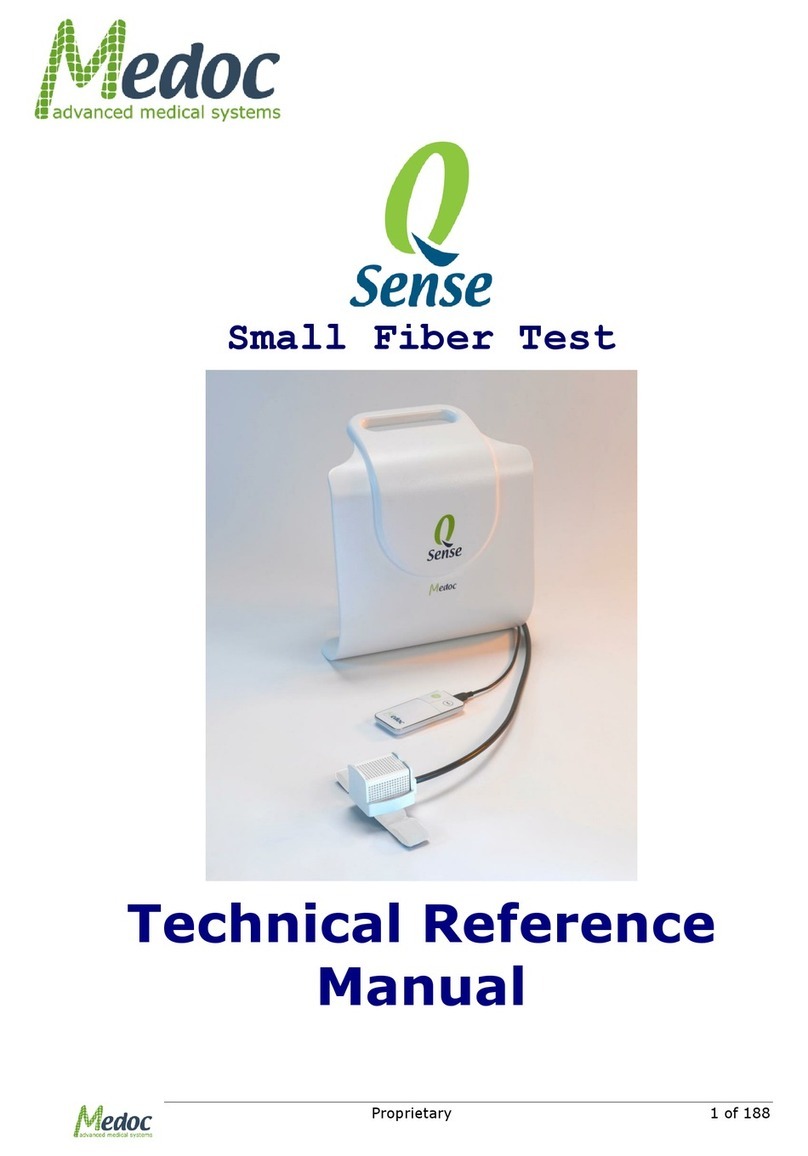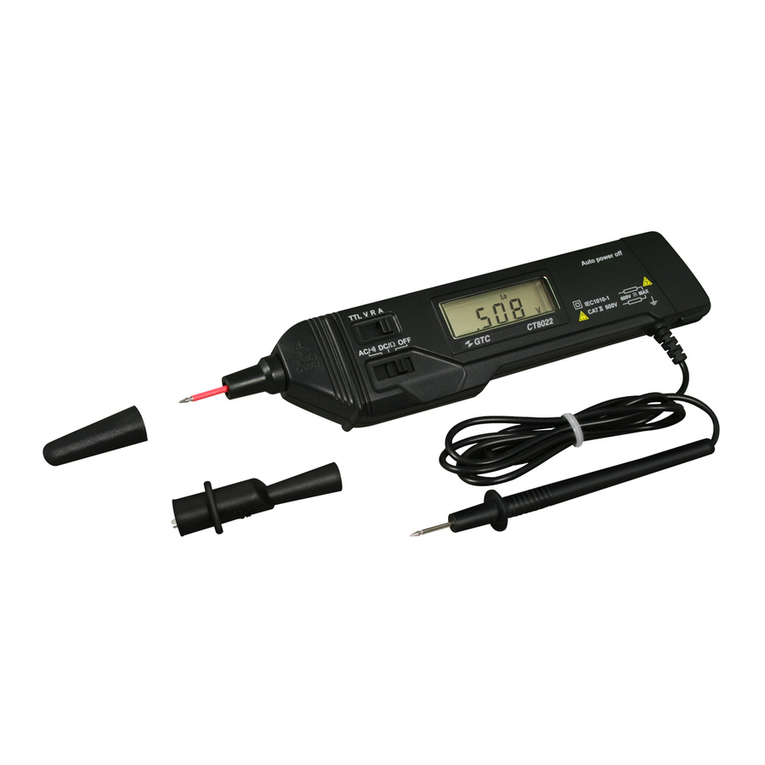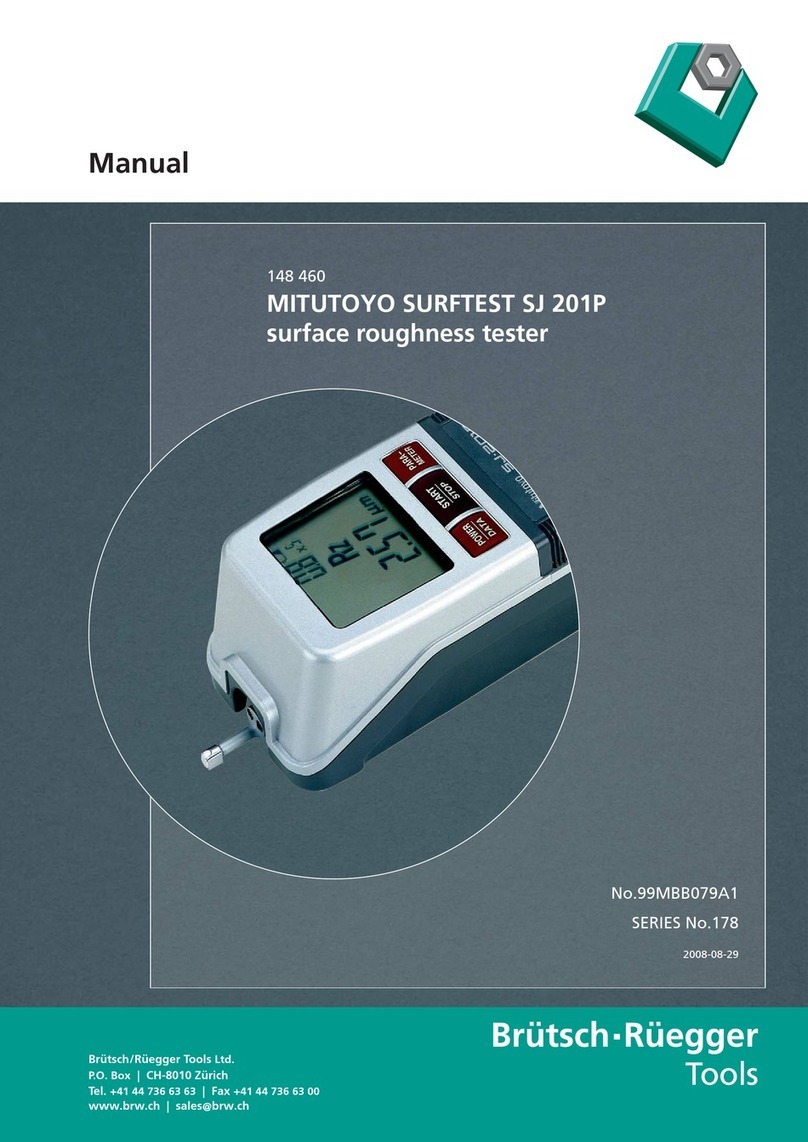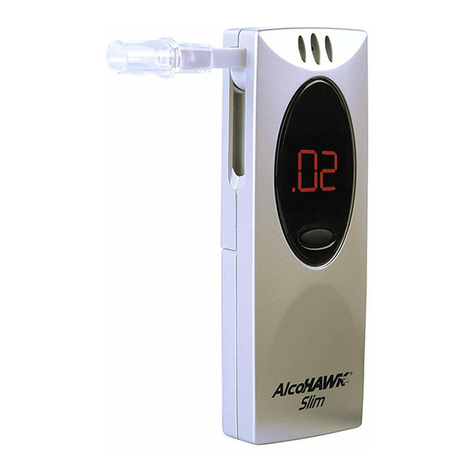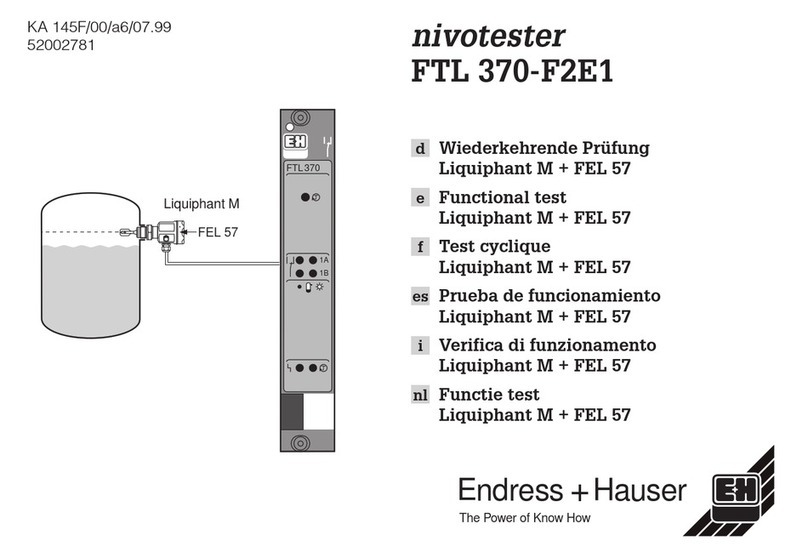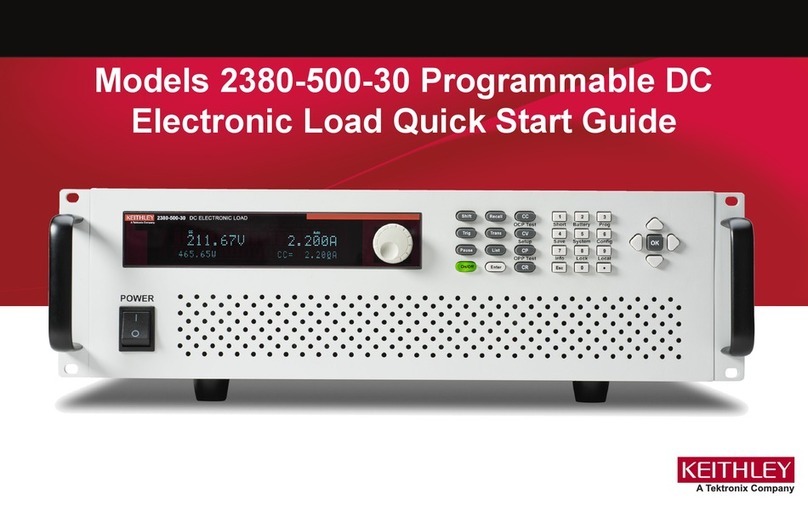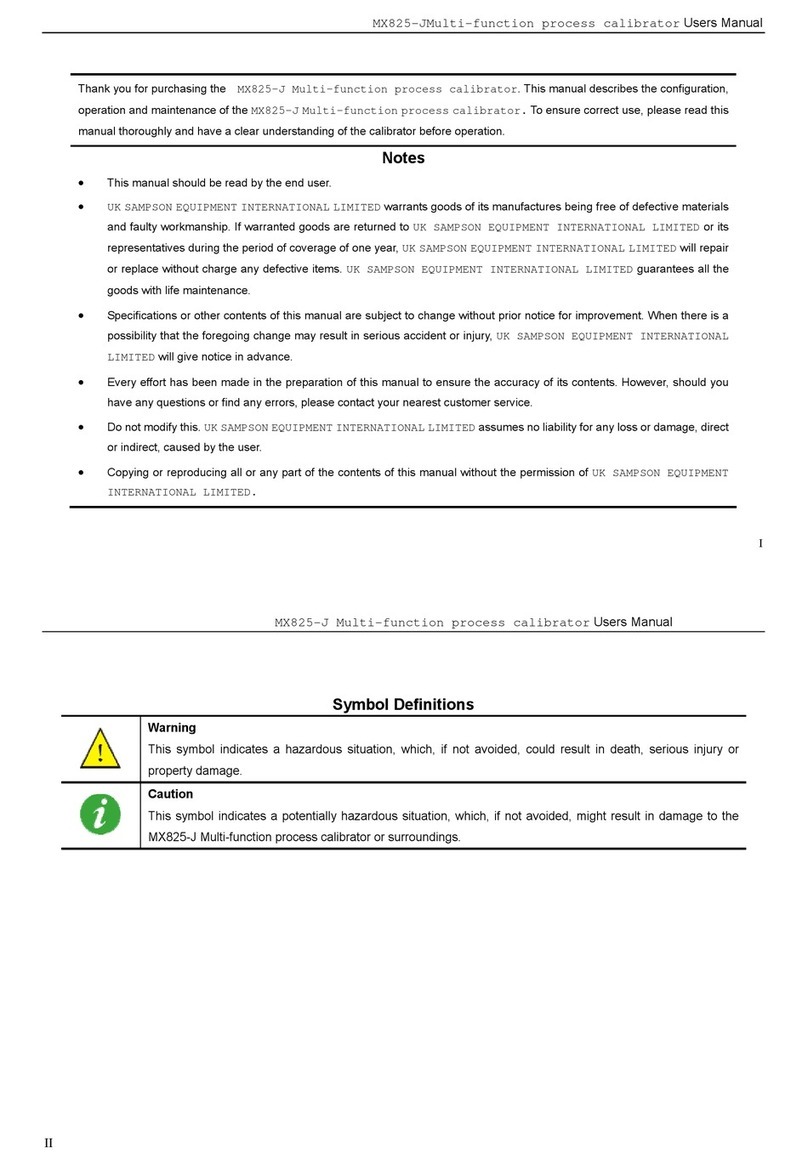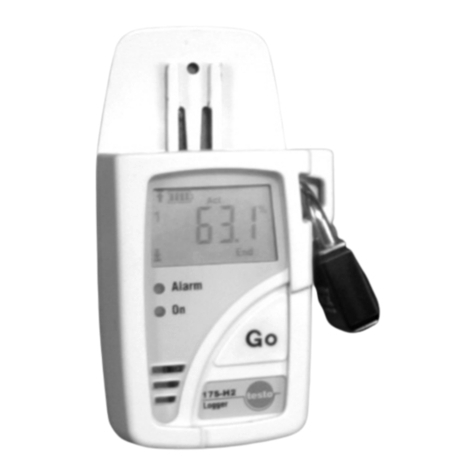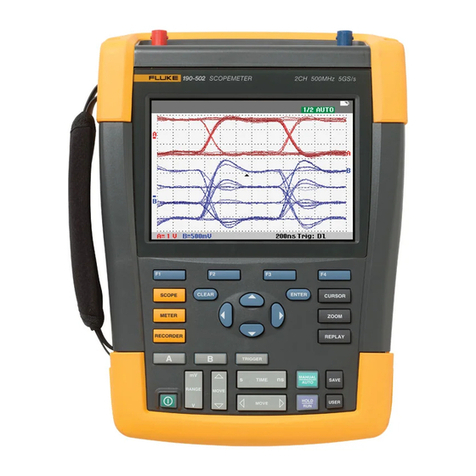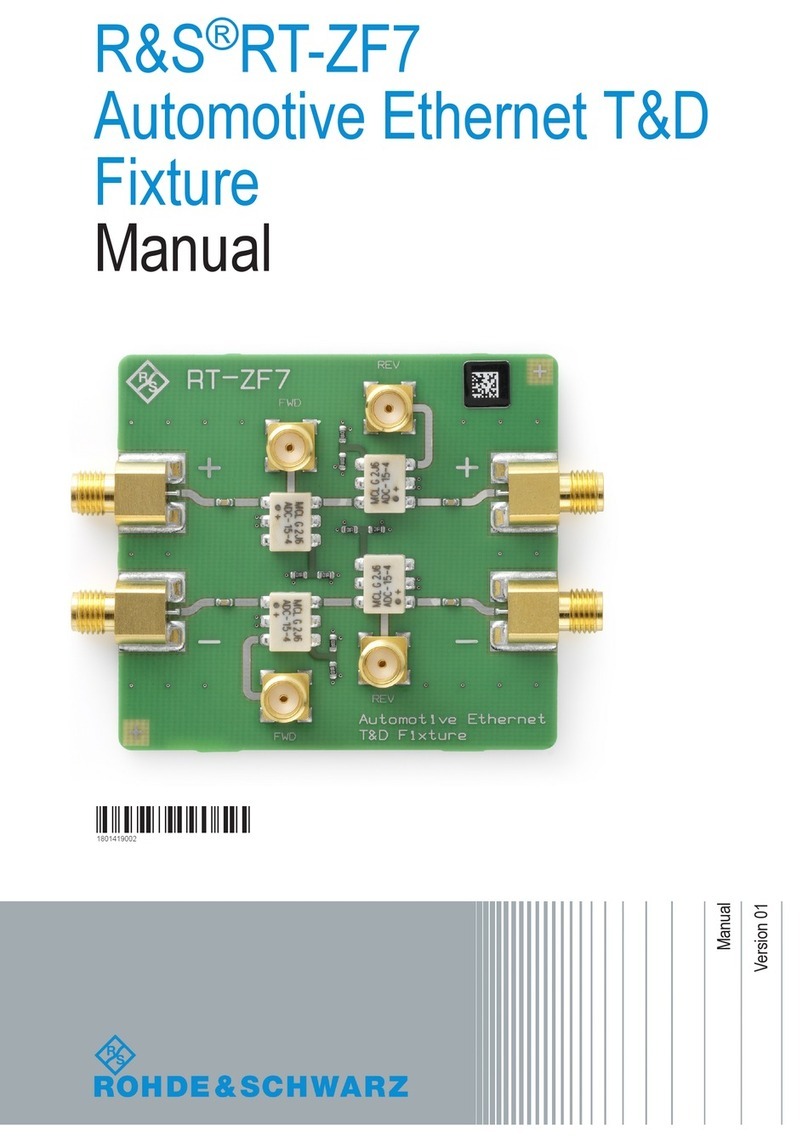Medoc Q-Sense User manual

Service Reference Manual

Pathway Technical Reference Service Manual Table of Contents
Proprietary 2 of 44
This Service Manual contains proprietary information of Medoc Ltd. and may not be reproduced in
any form without prior written consent from Medoc Ltd.
Q-Sense Technical Reference Service Manual 6th Edition, March 2018
Medoc Ltd.
1 Ha-Dekel St., PO Box 423 Ramat Yishai 3009500, ISRAEL
Tel: +972-4-9038800 / Fax: +972-4-9038808
Medoc U.S.A
Compass Medical Technologies, Inc.
1502 West Highway 54 - Suite 404
Durham, North Carolina, 27707, U.S.A
Tel: +1-(919) 402-9600 / Fax: +1-(919) 402-9607
European Authorized Representative
CEpartner4U BV
Esdoornlaan 13 3951 DB Maarn, The Netherlands
Phone: +31 343 442.524 / Fax: +31 343 442 162
Mobile: +31 6 516 536.26
0473
This device complies with 93/42/EEC MDD

Pathway Technical Reference Service Manual Table of Contents
Proprietary 3 of 44
Table of Contents
1Safety Guidelines and Regulations ...........................................................................6
1.1 User Manual Icons..........................................................................................................6
1.2 Intended use ...................................................................................................................7
1.3 Safety and Regulatory Summary...................................................................................7
1.4 Safety Requirements......................................................................................................7
1.4.1 Warnings.................................................................................................................................... 7
1.4.2 Cautions..................................................................................................................................... 8
1.4.3 Equipment Classification ........................................................................................................... 8
1.5 System Protection..........................................................................................................9
1.5.1 System Self-Test ....................................................................................................................... 9
1.5.2 Temperature Safety Mechanisms.............................................................................................. 9
1.5.3 Thermode Detection .................................................................................................................. 9
1.6 Equipment Labels, Symbols, Warning Statements and Abbreviations ....................10
1.7 Electromagnetic immunity...........................................................................................12
1.8 Recommended Separation Distance between Portable and Mobile RF
Communications Equipment and Q-Sense ...........................................................................14
1.9 Technical Data ..............................................................................................................15
2Thermode Management............................................................................................17
2.1 Enable/Disable Current Thermode ..............................................................................17
2.2 Thermode File Management.........................................................................................18
2.2.1 List of Available Thermode File Options.................................................................................. 18
2.2.2 View Thermode List................................................................................................................. 19
2.2.3 Create a New Thermode File .................................................................................................. 19
2.2.4 Delete a Thermode File........................................................................................................... 20
2.2.5 Export a Thermode File........................................................................................................... 20
2.2.6 Import a Thermode File ........................................................................................................... 20
2.2.7 Change the Thermode File Currently in Use........................................................................... 21
2.2.8 Load Properties from Thermode Currently Used by the System............................................. 21
2.3 Thermode Properties....................................................................................................22
2.3.1 General.................................................................................................................................... 22
2.3.2 TEC1 / TEC2 ........................................................................................................................... 22
3Thermode Calibration...............................................................................................24
3.1 Thermode Calibration Overview..................................................................................24
3.2 Calibration Kit...............................................................................................................24
3.3 Calibration Kit Setup ....................................................................................................25
3.4 Automatic Calibration...................................................................................................27
3.4.1 Thermometer Communication Setup....................................................................................... 27
3.4.2 Automatic Calibration Procedure............................................................................................. 28
3.4.3 Concluding Steps..................................................................................................................... 31
3.4.4 Automatic Calibration Properties............................................................................................. 31
3.5 Manual Calibration........................................................................................................33
3.5.1 Manual Calibration Procedure................................................................................................. 33
3.5.2 Concluding Steps..................................................................................................................... 35
3.5.3 Manual Calibration properties.................................................................................................. 35
3.5.4 Saving calibration tables and back-up:.................................................................................... 35
3.5.5 Error and Warning messages.................................................................................................. 36

Pathway Technical Reference Service Manual Table of Contents
Proprietary 4 of 44
4Q-SENSE Firmware...................................................................................................37
4.1 Preparing the System for Firmware Update................................................................37
4.2 Firmware Update...........................................................................................................39
4.3 Firmware and License Update .....................................................................................42
5Appendix A –RS232-USB Adaptor Driver...............................................................44

Pathway Technical Reference Service Manual List of Figures
Proprietary 5 of 44
List of Figures
Figure 1: Q-Sense Label...............................................................................................................10
Figure 2: Hardware Settings Menu................................................................................................17
Figure 3: Hardware Settings –Thermode tab................................................................................19
Figure 4: Thermode Properties .....................................................................................................22
Figure 5: Thermode Properties –LUT...........................................................................................23
Figure 6: Calibration Kit ................................................................................................................25
Figure 7: Thermode adaptor .........................................................................................................25
Figure 8: Thermode adaptor over mechanical body......................................................................25
Figure 9: Screw the thermode adaptor to the mechanical body.....................................................25
Figure 10: Applying Thermal Grease ............................................................................................26
Figure 11: Secure Thermode on jig 1............................................................................................26
Figure 12: Secure Thermode on jig 2............................................................................................26
Figure 13: Secure Thermode on jig 3............................................................................................26
Figure 14: Hang the thermode and jig on the Q-Sense.................................................................26
Figure 15: Thermometer D-type Connector...................................................................................27
Figure 16: Thermometer Communication Connection...................................................................27
Figure 17: RS232-to-USB Adapter Connection.............................................................................28
Figure 18: USB cable connection..................................................................................................28
Figure 19: Calibration port selection..............................................................................................29
Figure 20: Hardware Settings Menu..............................................................................................29
Figure 21: Thermode Calibration –Thermode...............................................................................30
Figure 22: Thermode Automatic Calibration..................................................................................30
Figure 23: Automatic Calibration Progress....................................................................................31
Figure 24: Automatic Calibration tab.............................................................................................32
Figure 25: Automatic Calibration Properties tab............................................................................32
Figure 26: Hardware Settings Menu..............................................................................................33
Figure 27: Thermode Calibration –General..................................................................................33
Figure 28: Thermode Calibration –Manual Calibration tab ...........................................................34
Figure 29: Back of the Q-Sense cover ..........................................................................................37
Figure 30: Opening Q-Sense........................................................................................................38
Figure 31: JTAG Port Location......................................................................................................38
Figure 32: JTAG USB Port connected ..........................................................................................38
Figure 33: JTAG Firmware Update ...............................................................................................39
Figure 34: Choose Image..............................................................................................................39
Figure 35: Closing Q-Sense..........................................................................................................40
Figure 36: Internal pins.................................................................................................................40
Figure 37: Communication USB port.............................................................................................40
Figure 38: JTAG Firmware Update ...............................................................................................42
Figure 39: Firmware & License Update.........................................................................................42
Figure 40: RS232-USB driver installation notification....................................................................44

Pathway Technical Reference Service Manual
Proprietary 6 of 44
Disclaimer
Medoc assumes no liability for use of this document if any unauthorized changes to the content
or format have been made. Every care has been taken to ensure the accuracy of the
information in this document. However, Medoc assumes no responsibility or liability for errors,
inaccuracies, or omissions that may appear in this document. Medoc reserves the right to
change the product without further notice to improve reliability, function or design. This manual
is provided without warranty of any kind, implied or expressed, including, but not limited to, the
implied warranties of merchantability and fitness for a particular purpose.
1 Safety Guidelines and Regulations
This manual is written for trained users of Medoc Products. The user includes the body with
authority over the equipment and those persons who actually handle the equipment.
Before attempting to work with this equipment, read, understand, note and strictly observe all
Warning notices, Cautions and Safety markings on the equipment.
Before attempting to work with this equipment, make sure that this manual and any Release
Notes delivered with the software media pack have been thoroughly read and fully understood,
paying particular attention to all:
1. Warnings
2. Cautions
3. Notes
4. Important Notices
5. User Notices
1.1 User Manual Icons
The following icons are used throughout the user manual:
Warning: A condition that could cause serious injury or death to a
patient and/or operator if instructions are not followed.
Caution: A condition that could cause possible damage to equipment or
cause the system to function inaccurately.
Note: Indicates important user information regarding the use of the
system.
Advice: Refer to instruction manual/ booklet
INSTRUCTION: Indicates an instruction where it is important to follow
the user manual literally as described.

Pathway Technical Reference Service Manual
Proprietary 7 of 44
1.2 Intended use
The use of the Q-sense system should be as intended by Medoc Ltd. and as specified in the user
manual. The Q-Sense is a pain management and pain research system intended to be used for
the quantitative assessment of small nerve fiber dysfunctions. It measures sensory thresholds
such as cold and warm sensation and heat-induced pain.
1.3 Safety and Regulatory Summary
Read and follow all WARNINGS, CAUTIONS and NOTES provided in this manual. To avoid the
possibility of injury, damage to your system, or loss of data, always follow these precautions during
system operation.
The Q-SENSE system complies with safety requirements for medical electrical systems (based
on the IEC 60601-1 standard).
The Q-SENSE system complies with electromagnetic emission levels (based on table 201 in
the IEC 60601-1-2 standard).
The Q-SENSE system complies with electromagnetic immunity levels (based on tables 202
and 204 in the IEC 60601-1-2 standard).
This device complies with 93/42/EEC MDD.
It is recommend keeping a distance of 3 meters between portable and mobile RF
communications equipment and the Q-SENSE (based on table 206 in the IEC 60601-1-2
standard).
1.4 Safety Requirements
The Q-SENSE system can be tested according to IEC 62353 Recurrent test
and test after repair of medical electrical equipment.
Do not modify or replace any component of the Q-SENSE system.
Do not use any other power supply other than the one provided by the
manufacturer.
Connecting or replacing external Q-SENSE accessories is allowed.
Keep all liquids away from the Q-SENSE system.
Unplug the Q-SENSE system if it is not to be used for a long period of time.
Do not block airflow anywhere around the Q-SENSE system.
1.4.1 Warnings
Only personnel properly trained to operate the Q-SENSE system should use this system.
Do not turn on system power until all cables have been properly connected and verified.
Do not use any electrode paste, gel, or other material on the contact point between the
Thermode plate and the skin of the tested subject.
To reduce the risk of injury, attach the Thermode to the subject only prior to running a test
while MEDOC Main Station is in Test screen. Remove the Thermode from the subject skin
before leaving the Test Screen.

Pathway Technical Reference Service Manual
Proprietary 8 of 44
Connect the Thermode to the patient's skin ONLY during the test; not during system Self-Test,
programming or maintenance.
The computer that is used to operate the Q-SENSE system must be powered through a
Medical Grade Isolation Transformer only.
The use of accessories or cables other than those specified, with the exception of accessories
or cables sold by the manufacturer as replacement parts, may result in increased emissions or
decreased electrical immunity of the device.
Connecting any device or accessory that has no medical grade certificate to the Q-SENSE
system is not allowed.
Using a Thermode without the appropriate calibration table may result in potential harm or
injury.
Using the Q-SENSE system not according to instructions may result in potential harm or injury.
Adverse Reaction: Skin irritation (in addition to pain sensation) beneath the probes has been
reported with the use of a stimulator, which was based on similar technology as the Q-Sense
device.
Be aware of potential risk of skin damage caused by wrong parameter combination.
1.4.2 Cautions
Proper use of this device depends on careful reading of all instructions and labels.
Turn OFF system power before connecting or disconnecting any system component(s) or
accessories. Otherwise, you may damage the device(s).
The Thermode is very delicate and can easily be damaged. Therefore, handle with care.
If you disconnect any cables, take care to reconnect them correctly to prevent damage to the
system or components.
This equipment uses a three-wire power cord with a hospital grade plug (for non-USA
applications, the IEC 60601-1-approved plug).
Inspect the power cord often for fraying or other damage. DO NOT operate the apparatus if the
power cord or plug is damaged.
The computer that is used to operate the Q-SENSE system must never be connected to a
network while it is used for running tests.
The Q-SENSE system does not require special precautions regarding EMC, and needs to be
installed and put into service according to this manual.
Portable and mobile RF communications equipment can affect medical electrical equipment.
Use caution when using the Q-SENSE Thermode on patients with suspected neuropathies as
they may be more susceptible to soft tissue or nerve damage at extreme temperatures. Also,
patients with neuropathies may not be able to properly discontinue use of the device during
prolonged hot or cold stimulation.
1.4.3 Equipment Classification
Degree of protection against electric shock: Class I
Type of protection against electric shock: BF
Type of Operation: Continuous
Protection against ingress of liquids: Not protected against ingress of liquids
Ordinary equipment.
Computer must comply with IEC 950 - EN 60950 - UL 60950.

Pathway Technical Reference Service Manual
Proprietary 9 of 44
1.5 System Protection
1.5.1 System Self-Test
Upon start-up the system performs a self-test in which system sensors are being tested. If a
malfunction is detected, an appropriate message is displayed and the system cannot operate until
that malfunction is resolved.
1.5.2 Temperature Safety Mechanisms
Several safeguard mechanisms have been implemented in the system to safeguard against
extreme temperatures and to protect the tested subject and the unit.
Software protection mechanisms include:
Temperature upper and lower limits –In normal operation, Thermode temperature will always
be within these limits.
Time duration limits –Thermode temperature is limited in duration. If the Thermode
temperature maintains a specific temperature (or above) for a longer period of time then
specified for that temperature, the system will go into Safe Mode.
Safe Mode –a protective state of the system in which it is not possible to run tests. In any case
of suspected malfunction or if any modification is made to system hardware settings, system
will remain in safe mode until a system Self-Test is performed.
Hardware protection mechanisms include:
If the Thermode temperature reaches 57C an analog circuit overrides the system and lowers
the temperature gradually.
1.5.3 Thermode Detection
The system automatically detects that a Thermode is missing, and disables it in order to protect
both system and user.

Pathway Technical Reference Service Manual
Proprietary 10 of 44
1.6 Equipment Labels, Symbols, Warning Statements and
Abbreviations
Figure 1: Q-Sense Label
Table 1: Equipment Labels
Equipment Label
Description
I
O
Power switch ON/OFF
COM
Communications connector.
Date of Manufacture (YYYY-MM)
Manufacturer
Degree of protection against electric shock –
Applied Part Type BF.
Warning - Connect the power cord to the power
outlet, according to the local electrical standards.
Refer to Manual
Disposal according to electronic scrap ordinance
Manual edition refers to current version of manufactured system

Pathway Technical Reference Service Manual
Proprietary 11 of 44
Medoc reserves the right to change specifications without prior notice, in line
with the company policy of constant product improvement

Pathway Technical Reference Service Manual
Proprietary 12 of 44
1.7 Electromagnetic immunity
The Q-Sense is intended for use in the electromagnetic environment specified below. The
customer or the user of the Q-Sense should assure that it is used in such an environment.
Immunity test
IEC 60601
test level
Compliance level
Electromagnetic environment –
guidance
Electrostatic
discharge (ESD)
IEC 61000-4-2
±6 kV contact
±8 kV air
±6 kV contact
±8 kV air
Floors should be wood, concrete
or ceramic tile. If floors are
covered with synthetic material,
the relative humidity should be at
least 30 %.
Power frequency
(50/60 Hz)
magnetic field
IEC 61000-4-4
3 A/m
50 & 60 Hz
3 A/m
50 & 60 Hz
Power frequency magnetic fields
should be at levels characteristic
of a typical location in a typical
commercial or hospital
environment.
Electrical fast
transient/burst
IEC 61000-4-4
±2 kV for power
supply lines
±2 kV for power
supply lines
Mains power quality should be
that of a typical commercial or
hospital environment.
Surge
IEC 61000-4-5
±1 kV line(s) and
neutral
±1 kV line(s) and
neutral
Mains power quality should be
that of a typical commercial or
hospital environment.
Voltage dips, short
interruptions and
voltage variations
on power supply
input lines
IEC 61000-4-11
<5 % UT
(>95 % dip in UT)
for 0,5 cycle
40 % UT
(60 % dip in UT)
for 5 cycles
70 % UT
(30 % dip in UT)
for 25 cycles
<5 % UT
(>95 % dip in UT)
for 5s
<5 % UT
(>95 % dip in UT)
for 0,5 cycle
40 % UT
(60 % dip in UT)
for 5 cycles
70 % UT
(30 % dip in UT)
for 25 cycles)
<5 % UT
(>95 % dip in UT)
for 5s
Mains power quality should be
that of a typical commercial or
hospital environment. If a dip or
an interruption of mains power
occurs, the current of the Q-
sense may be dropped off from
normal level, it may be necessary
to use uninterruptible power
supply or a battery.
NOTE UT is the a.c. mains voltage prior to application of the test level

Pathway Technical Reference Service Manual
Proprietary 13 of 44
Immunity test
IEC 60601
test level
Compliance
level
Electromagnetic environment –guidance
Radiated RF
IEC 61000-4-3
3 V/m
80 MHz to
2.5 GHz
3 V/m
Portable and mobile RF communications
equipment should be used no closer to any
part of the Q-Sense, including cables, than
the recommended separation distance
calculated from the equation applicable to
the frequency of the transmitter.
Recommended separation distance
where P is the maximum output power rating
of the transmitter in watts (W) according to
the transmitter manufacturer and d is the
recommended separation distance in metres
(m).
Field strengths from fixed RF transmitters,
as determined by an electromagnetic site
survey* should be less than the compliance
level in each frequency range**
Interference may occur in the vicinity of
equipment marked with the following symbol:
NOTE 1 At 80 MHz and 800 MHz, the higher frequency range applies.
NOTE 2 These guidelines may not apply in all situations. Electromagnetic propagation is affected by
absorption and reflection from structures, objects and people.
* Field strengths from fixed transmitters, such as base stations for radio (cellular/cordless)
telephones and land mobile radios, amateur radio, AM and FM radio broadcast and TV broadcast cannot
be predicted theoretically with accuracy. To assess the electromagnetic environment due to fixed RF
transmitters, an electromagnetic site survey should be considered. If the measured field strength in the
location in which the Q-Sense is used exceeds the applicable RF compliance level above, the Q-Sense
should be observed to verify normal operation. If abnormal performance is observed, additional measures
may be necessary, such as reorienting or relocating the Q-Sense.
** Over the frequency range 150 kHz to 80 MHz, field strengths should be less than 3 V/m.

Pathway Technical Reference Service Manual
Proprietary 14 of 44
1.8 Recommended Separation Distance between Portable and Mobile
RF Communications Equipment and Q-Sense
The Q-Sense is intended for use in an electromagnetic environment in which radiated RF
disturbances are controlled. The customer or the user of the Q-Sense can help prevent
electromagnetic interference by maintaining a minimum distance between portable and mobile RF
communications equipment (transmitters) and the Q-Sense as recommended below, according to
the maximum output power of the communications equipment.
Rated maximum output
power of transmitter
(W)
Separation distance according to frequency of transmitter
(m)
150 kHz to 80
MHz
80 MHz to 800
MHz
80 MHz to 2.5 GHz
0.01
0.12
0.12
0.23
0.1
0.37
0.37
0.74
1
1.2
1.2
2.3
10
3.7
3.7
7.4
100
12
12
23
For transmitters rated at a maximum output power not listed above, the recommended separation
distance d in metres (m) can be estimated using the equation applicable to the frequency of the
transmitter, where P is the maximum output power rating of the transmitter in watts (W) according to
the transmitter manufacturer.
NOTE 1: At 80 MHz and 800 MHz, the separation distance for the higher frequency range applies.
NOTE 2: These guidelines may not apply in all situations. Electromagnetic propagation is affected
by absorption and reflection from structures, objects and people.

Pathway Technical Reference Service Manual
Proprietary 15 of 44
1.9 Technical Data
Medoc reserves the right to change specifications without prior notice, in line
with the company policy of constant product improvement
The table below describes the technical specifications and capabilities of the Q-Sense system.
Table 2: Q-SENSE Specifications
Parameter
Specification
Thermode Active Area
30x30 mm
Temperature Range
16–50 °C
Heating Rate
0 –2 °C/Sec ± 10%
Cooling Rate
0 - 1 °C/Sec ± 10%
Stimulation Methods
Limits, Levels & TSL
Set-Point Resolution
0.1 °C
Display Resolution
0.1 °C
Repeatability
± 0.3 °C
Absolute Accuracy
±0.3 °C
Operating Mode
Intervals*
*(Short pause between patients may be required)
Minimum Inter Stimuli Interval (ISI)
2 sec
Maximum Consecutive Stimuli
10
Baseline Temperature Range
28 –40 °C
Programmable Parameters
Method, Adaptation Temperature, Heating Rate,
Cooling Rate, Number of Stimuli, ISI, Sound Option,
Randomize Option
Communication with PC
USB
Communication with Printer
Via PC
Standards
IEC 60601-1; IEC 60601-1-2
Approvals
CE, FDA
Operating Voltage
12 VDC, 5A
Power Supply
100 –240 VAC, 4 –2 A, 50/60 Hz
Power Consumption
Approx. 60W
Dimensions
31cm X 28 cm X 16cm (table or wall mount)
Shipping: 53cm X 34cm X 22cm
Weight
Approx. 8 Kg
Shipping: Approx. 10 Kg
Software
Propriety Software Application (Included)
Computer Requirements (PC not included)
Notebook PC (Atom CPU not supported)
At least 2 GB RAM, 6 GB Free disc space.
Windows 7/8 (32 & 64 bit) , Windows XP (32bit) sp.
3 and above

Pathway Technical Reference Service Manual
Proprietary 16 of 44
Parameter
Specification
Screen Resolution
1366X768 and higher
Patient Response Unit
2 buttons (Yes / No) Response Unit
Product life time
10 years

Pathway Technical Reference Service Manual
Proprietary 17 of 44
2 Thermode Management
Medoc Main Station software enables you to create and manage your Thermode database. This
section explains how to create a new Thermode file, load from existing file, edit, save and delete
files.
2.1 Enable/Disable Current Thermode
Enabling or disabling the current Thermode controls whether or not the Thermode will be activated.
If the Thermode is disabled, it can't be controlled by the system. The Thermode may be
automatically disabled if the Thermode is accidently disconnected or due to malfunction.
1. Turn ON the Q-SENSE system. Make sure that communication is established.
2. From the Settings menu, select Hardware Settings. Open the General tab
3. The following screen is displayed:
Figure 2: Hardware Settings Menu
4. Check the Thermode Enabled box at the top left side of the screen to Enable the Thermode
5. Click Apply
The Thermode needs to be enabled in order to manage the Thermode
database.

Pathway Technical Reference Service Manual
Proprietary 18 of 44
2.2 Thermode File Management
Using the correct Thermode parameters is critical to ensure the safe and reliable use of the Q-
Sense Thermode. The Thermode properties are stored in Thermode files which are saved in the
Medoc Main Station database. The Thermode properties currently in use by the Q-Sense system
are also saved on the Q-Sense system memory.
The Thermode file contains of all Thermode data, including calibration tables
for all it temperature sensors and properties important for accurate
temperature control.
This section covers the all tasks related Thermode file database management.
For Thermode Calibration Procedure, refer to section 3, page 24
2.2.1 List of Available Thermode File Options
Table 3: List of Thermode File Options
Description
Create a New Thermode file in database. See section 2.2.3
Delete a Thermode file from the database. See section 2.2.4
It is not possible to delete a Thermode, when it is the only one in
the list.
Export a Thermode file from the database. See section 2.2.5
Medoc recommends using an identifiable name when saving the
Thermode file.
Import a Thermode file into the database. See section 2.2.6
Change the Thermode parameters currently used by the system.
See section 2.2.7
Load Thermode data from system into a database Thermode file.
See section 2.2.8

Pathway Technical Reference Service Manual
Proprietary 19 of 44
2.2.2 View Thermode List
1. Turn ON the Q-SENSE system, and make sure that communication is established.
2. From the Settings menu, select Hardware Settings. Open the Thermode tab.
3. The following screen is displayed:
Figure 3: Hardware Settings –Thermode tab
4. The Thermode list on the left side panel contains a list of all Thermodes currently listed in the
database.
5. The last Thermode in the list is the Thermode file currently used in the Q-Sense device. This
Thermode is indicated by the following icon:
Only the Thermodes listed in the database can be edited. The Q-Sense
Thermode is for viewing only and shows the file currently used by the system.
6. A copy of the Thermode files used by the system should exist in the database and is indicated
The Thermode currently in use by the system is indicated by the following icon:
2.2.3 Create a New Thermode File
To create a new Thermode file in the database:
1. Open the Thermode tab in Hardware Settings (see section 2.2.2)
1. Click the button.
2. In the general tab enter Thermode details: Name (required) and Serial Number.
3. Click Apply.
4. Calibrate the new Thermode (see section 3, page 24)

Pathway Technical Reference Service Manual
Proprietary 20 of 44
2.2.4 Delete a Thermode File
Delete Thermode files which are no longer relevant (for example if the Thermode is out of use or
has been replaced)
To delete a Thermode file from the database:
1. Open the Thermode tab in Hardware Settings (see section 2.2.2)
2. From the Thermode list in the left panel select the Thermode file to be deleted.
3. Click the Delete Thermode button
4. Click Yes to confirm.
2.2.5 Export a Thermode File
Export your Thermode files and save them for backup purposes. Thermode files are exported as a
.Thr file and can only be opened using Medoc Main Station software.
To export a Thermode file from the database:
1. Open the Thermode tab in Hardware Settings (see section 2.2.2)
2. From the Thermode list in the left panel select the Thermode file to be exported.
3. Click the Save to file button
4. Select the location where you want to save the Thermode file.
5. Type a meaningful name (Thermode type, serial number) and click the Save button.
2.2.6 Import a Thermode File
Import your Thermode files into the database when re-installing Medoc Main Station software or
restoring from backup. Thermode files are identified by a .Thr suffix and can only be opened using
Medoc Main Station software.
To Import a Thermode file into the database:
1. Open the Thermode tab in Hardware Settings (see section 2.2.2)
2. Click the Load from file button
3. Select the Thermode file to import and Click the Open button.
After initial Thermode installation, load the applicable Thermode calibration
tables from the Installation CD.
Table of contents
Other Medoc Test Equipment manuals
